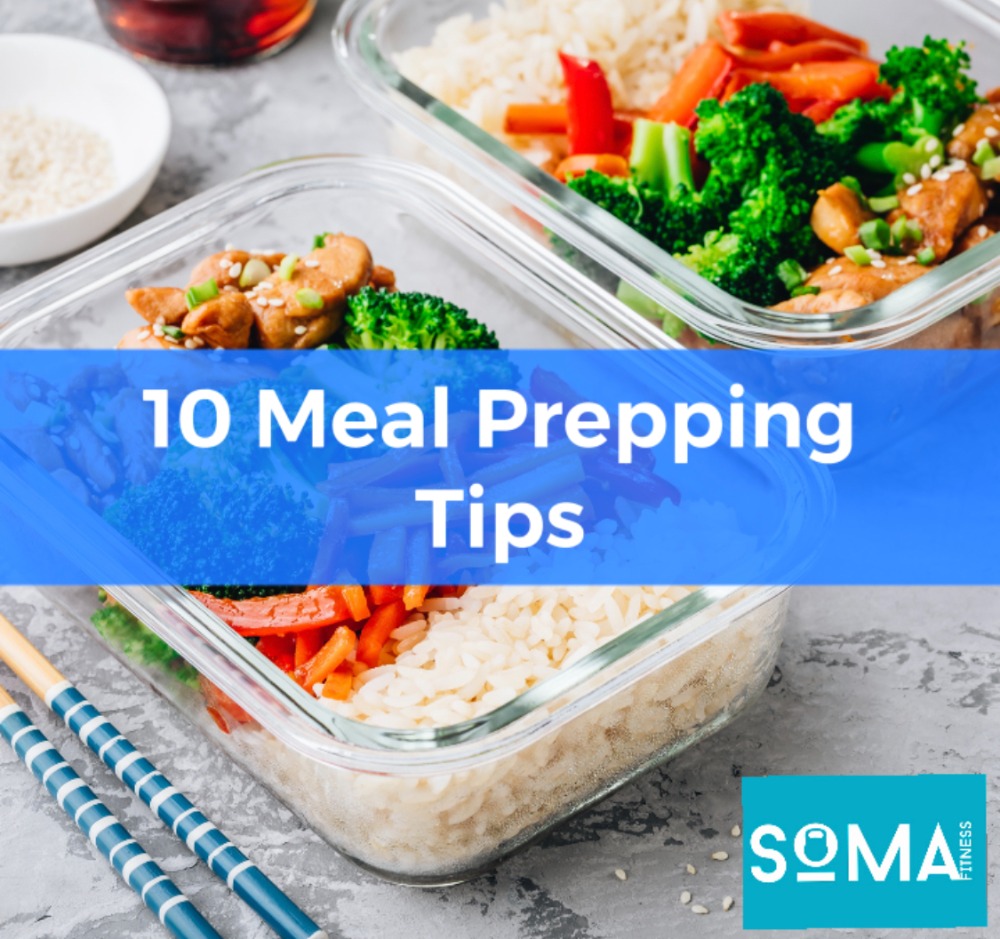Meal Prepping Tips

Meal prepping is a great way to stay on track with your diet and ensure that you have healthy, nutritious food on hand throughout the week. Here are some tips for getting started:
Plan ahead: Before going grocery shopping, sit down and plan out your meals for the next few days. This will help you avoid impulse buying and ensure that you have all the ingredients you need on hand. Consider your schedule for the upcoming week and plan your meals accordingly. For example, if you know you’ll be busy on certain days, plan for easy-to-make meals or leftovers on those days.
Choose nutrient-dense foods: Focus on foods that are high in nutrients and low in calories. Proteins such as lean meats, fish, eggs and beans, Whole grains, fruits and vegetables, and healthy fats such as nuts, seeds, and avocados are all great options. Avoid processed foods, sugary drinks and snacks, and fried foods as much as possible.
Prep in bulk: Cooking in bulk can save you time and money. Choose recipes that can be easily scaled up or that have ingredients that can be used in multiple meals. For example, you can cook a large batch of rice, potatoes or quinoa, and use it for multiple meals throughout the week.
Keep it simple: Meal prepping doesn’t have to be complicated or time-consuming. Simple dishes like lean mince, grilled chicken or fish with a side of steamed vegetables, or a large salad with various toppings, can be just as nutritious and satisfying as more complex recipes.
Get organized: Invest in some good quality storage containers and label them with the date and contents. This will help you keep track of what you have and when it needs to be eaten. It’s also helpful to have a designated area in your fridge for your prepped meals, so you can easily grab them when you’re on the go.
Add variety: Don’t feel like you have to eat the same thing every day. Mix and match your meals and try to change them up every week. This will help you avoid getting bored with your food and make it easier to stick to your diet. This will also give you a diverse amount of nutrients.
Enjoy: Remember to enjoy your meal and savour the flavours. Eating healthy should be a pleasure, not a punishment. Take the time to sit down and enjoy your prepped meals, and don’t feel guilty if you indulge in a treat every once in a while so long as you plan for it.
Herbs and spices: stock up on herbs and spices so you can add diverse flavours to your food. A lot of individuals perceive meal prepping to be boring bland add some flavour to your food by adding herbs or spices.
Keep track of your progress: Keep track of your meals and how you feel after eating them. This will help you identify what works for you and what doesn’t, and make adjustments as needed.
I am not a skilled cook? No one is born with the skills on how to cook, we all have to start somewhere, so start today and try one recipe at a time and build on it. Practice makes perfect don’t make excuses and build barriers for yourself, change your mindset in the information age today we have 1000s of recipes at our finger tips.
By following these tips, you’ll be well on your way to meal prepping like a pro and staying on track with your diet. Remember to be patient with yourself and to not get discouraged if you slip up. Meal prepping is a process, and it takes time to develop the habit. We will be posting some meal prep friendly recipes throughout the coming weeks to help you all along the way.




Recent Comments